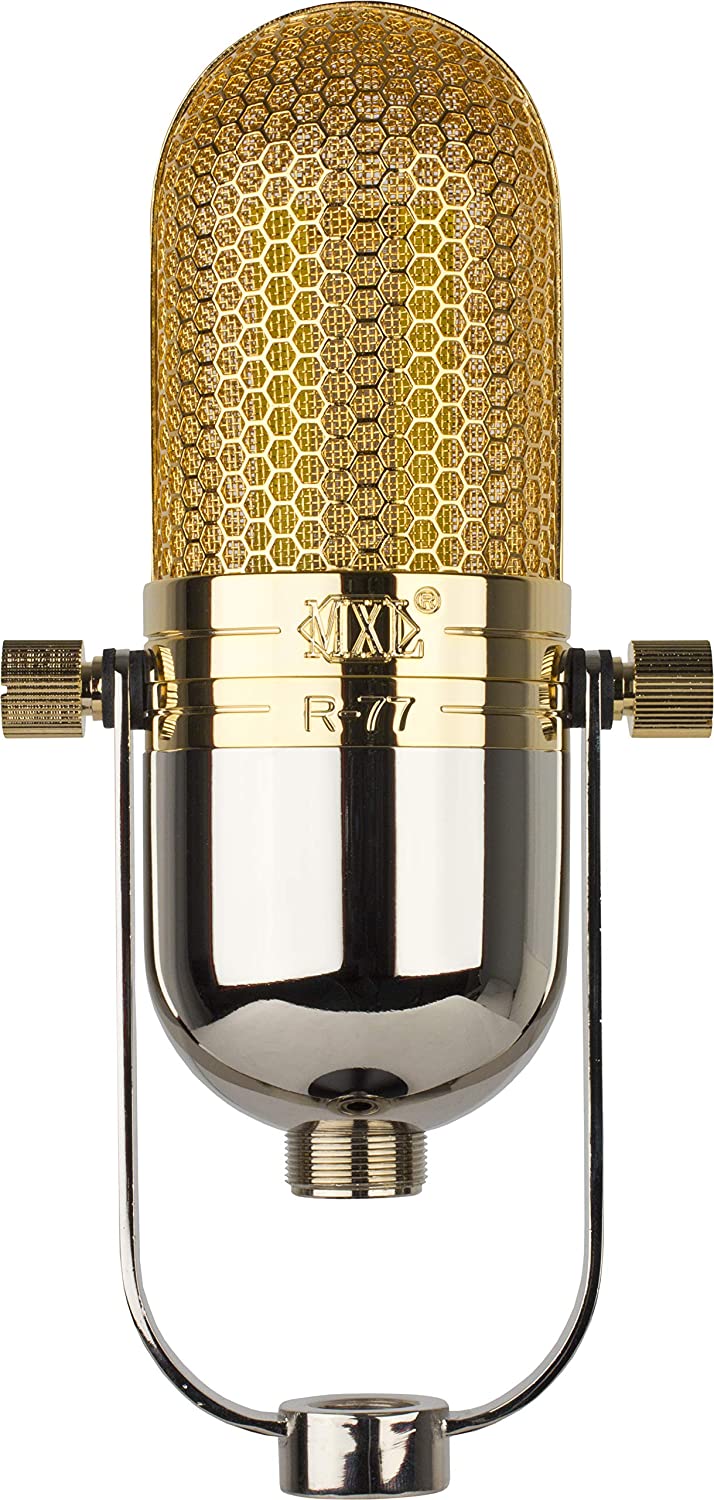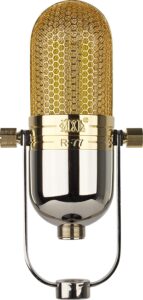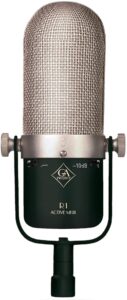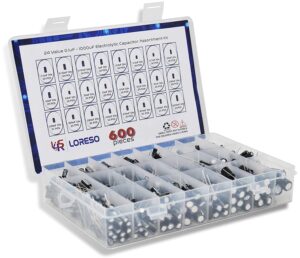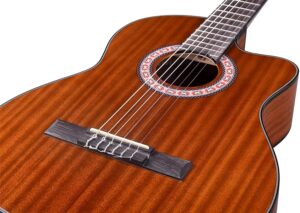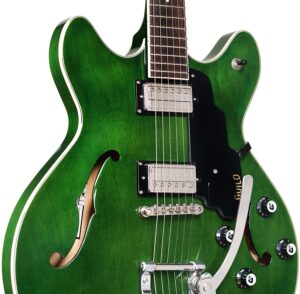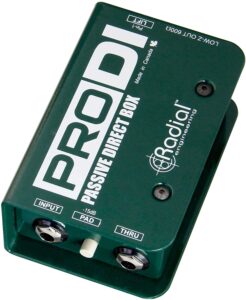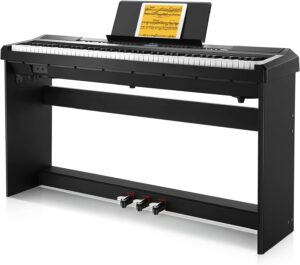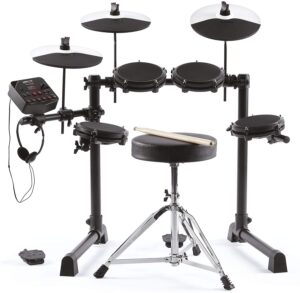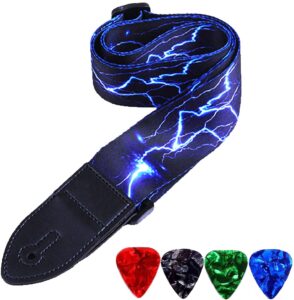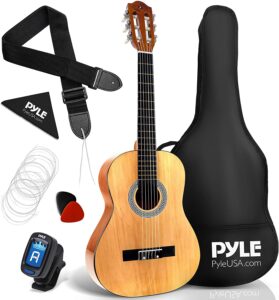If you want to record your instrument or voice in real-life quality, there is simply no better option than a ribbon microphone. A ribbon microphone consists of a thin metal ribbon placed between the poles of an electromagnet. It does not have a coil and diaphragm set up, so the recording is free from unnecessary vibrations and distortions. The quality of sound recorded through a ribbon microphone is as close as possible to real-life hearing. That’s the reason why most experts recommend it for studio recording purposes.
However, you cannot just buy any ribbon microphone and expect outstanding quality from it. You need to make sure that you are purchasing a genuine product that suits your requirements precisely.
To save your time, we’ve found out five of the Best Ribbon Microphone for Studio Recording. Just choose one from this list and get the best value for money; it’s that simple.
| IMAGE | PRODUCT | DETAILS | ||
|---|---|---|---|---|
Our Top Pick | Our Top Pick | sE Electronics Vintage Voodoo VR1 Passive Ribbon Microphone |
| Check Latest Price |
2 | 2 | ART AR5 ACTIVE RIBBON MICROPHONE |
| Check Latest Price |
3 | 3 | Shure SM58-LC Cardioid Dynamic Vocal Microphone |
| Check Latest Price |
4 | 4 | MXL Ribbon Microphone, XLR Connector, Chrome/Gold R77 |
| Check Latest Price |
5 | 5 | Golden Age Project R1 Active MKIII Active Ribbon Microphone |
| Check Latest Price |
Reviewing top five Best Ribbon Microphone For Studio Recording
Voodoo VR1 is a passive ribbon microphone from the vintage edition of sE electronics. Designed by the company CEO Siwei Zou himself, this beautiful piece has the looks of a mid-20th-century European ribbon mic. It has a ruler-flat frequency response from 20Hz to 18kHz +/- 2dB and max SPL for 0.5% THD @ 1000Hz 135dB. The Voodoo VR1 is a very cost-effective model from sE Electronics, but its recording quality is no less than high-end ribbon microphones.
What We Liked
- Affordable pricing
- Lightweight and small
- Easy to position
- Aesthetics of a vintage mid-20th-century European ribbon mic
- Provides exceptionally smooth, rich sound clarity at mid-low frequencies
What We Didn’t Like
- sE has done a great job as usual with the Voodoo VR1. But some say that the frequency enhancements take away some classic ribbon mic features.
AR5 active ribbon microphone from ART is an affordable, sleek, and compact mic with a 48V phantom power. It has a figure 8 pickup pattern and an active preamp module that offers stable frequency and a higher output, sufficient for live stage and recording studio environments. It provides rich sound clarity at both high and low frequencies and has a shock mount and cable, allowing you to connect additional accessories. Built with a stainless-steel wire-mesh windscreen, ART has designed this model to be dent-resistant and long-lasting.
What We Liked
- Affordable Pricing
- Beautiful compact design
- High Durability
- High range output suitable for live stage and recording studios
What We Didn’t Like
- It works well outdoors and in recording studios but can be too powerful for indoor use.
For a twist, here we have a dynamic mic that matches the class of ribbon mics. The Shure SM58-LC is a highly affordable model that can compete with high-end ribbon microphones when it comes to quality. It has an inbuilt spherical wind and pop filter, and the frequency range is 50 Hz – 15 kHz, which is just perfect for vocals. It comes with a pneumatic shock mount that suppresses mechanical noise and vibrations perfectly.
What We Liked
- Highly affordable pricing
- Great quality for vocal recording
- Durable and long-lasting construction
- Inbuilt wind and pop filter
What We Didn’t Like
- Shure SM58-LC is a Vocal Microphone, so it may not be ideal for recording instrument sounds.
MXL R77 Ribbon microphone is an elite piece that looks stunning in both chrome and gold versions due to the shiny metalwork on it. The passive ribbon microphone has a high SPL, capable of providing high-quality sound for guitars, percussion pads, and horns as well. MXL has used a 1.8-micron aluminum ribbon in this mic, which provides a frequency range of 20Hz to 18kHz, so you’ll get top-quality at low, mid, and high ranges.
What We Liked
- Extremely stylish shiny metal chrome and gold finish
- It comes with a classy swivel mount
- Powerful microphone capable of handling voice and instruments with uniformness
- High SPL and a frequency range of 20Hz to 18kHz
What We Didn’t Like
- Well, this here is an elite model that oozes class; so obviously, the cost is a bit high on this one.
MK III is an active ribbon microphone that provides a clear sound and warmth of a classical ribbon microphone. It has an ultra-high SPL capability, 160 dB SPL (1% THD@ 1000Hz), and a FET / Bipolar discrete low-noise current amplifier powered by 48V phantom power. This microphone consists of a 50mm long 2 microns thick aluminum foil ribbon that offers large and mellow ribbon sound quality with a very smooth top end and an extended low end. The Golden Age Project R1 Active MKIII comes in a padded case for protection during transportation.
What We Liked
- Classy and well-finished compact design
- Provides warmth of a ribbon microphone and stability of a FET buffer amplifier
- Ultra-high SPL
- Connecting cable included
- Switchable -10db pad and 100hz low cut filter
What We Didn’t Like
- At 3.24 Pounds, the MKIII s a bit heavy.
How to Buy Ribbon Microphones?
Ribbon microphones are available in two formats, active and passive microphones, and to make the right purchase, you need to understand the benefits of both types.
• Passive Ribbon Mics: The passive mics have a simple construction consisting of a ribbon, two magnets, and a transformer. They produce a warm natural sound but have a low output. That’s why you need a high-gain and high-impedance preamp to bring out the peak performance of a passive mic. However, passive mics can be used with high and low impedance amps to change the coloration and tonality of the microphone.
• Active Ribbon Mics: Active mics are almost identical to passive mics, but they are an upgraded version. An active mic has electronics powered by phantom power that offers consistent impedance and a better signal-to-noise ratio when you use different amps. The colorations and sound changes depend only on the type of amp you choose.
As you can see, both these microphones are quite similar. While some artists like passive microphones due to the unique variations and color it produces when using low impedance amps, while some prefer active microphones due to the consistency it offers. Active mics’ consistency allows the user to use different amps without having to worry about the gain level and frequency response of the mic.
So, which one would suit you the best? Active or Passive Microphone?
The answer to this depends on your understanding and preferences of amplifiers. If you want the flexibility of choosing any amp without losing consistency, an active ribbon mic would be the right choice, and if you like the unique coloration and different frequency response when using low impedance amps, a passive ribbon mic is the best option for you.
Frequently Asked Questions
Why Are Ribbon Mics Better?
Is Ribbon Microphone Only Good For Vocals?
How Much Gain Is Needed For Ribbon Mics?
Conclusion
And so, we conclude our discussion on the Best Ribbon Microphone for Studio Recording. As you can see, all the models mentioned above are made by top brands in the industry, and therefore, their quality and performance are simply unmatched. So, if you need clear, warm, and natural sound for studio recording, all you need to do is choose one from our list of top 5 ribbon microphones.
So, get one now and enjoy exceptional quality recording.

